32: Modest Proposal Interview, What Druckenmiller Taught Kothari, Amazon Biometrics, Nvidia's Optimizations, and the Zodiac's Basement
"the Jupiter flyby options took about 5 years less"
Daniel Oppenheimer's Ig Nobel Prize acceptance speech:
"My research shows that conciseness is interpreted as intelligence. So, thank you."
Yep.
Investing & Business
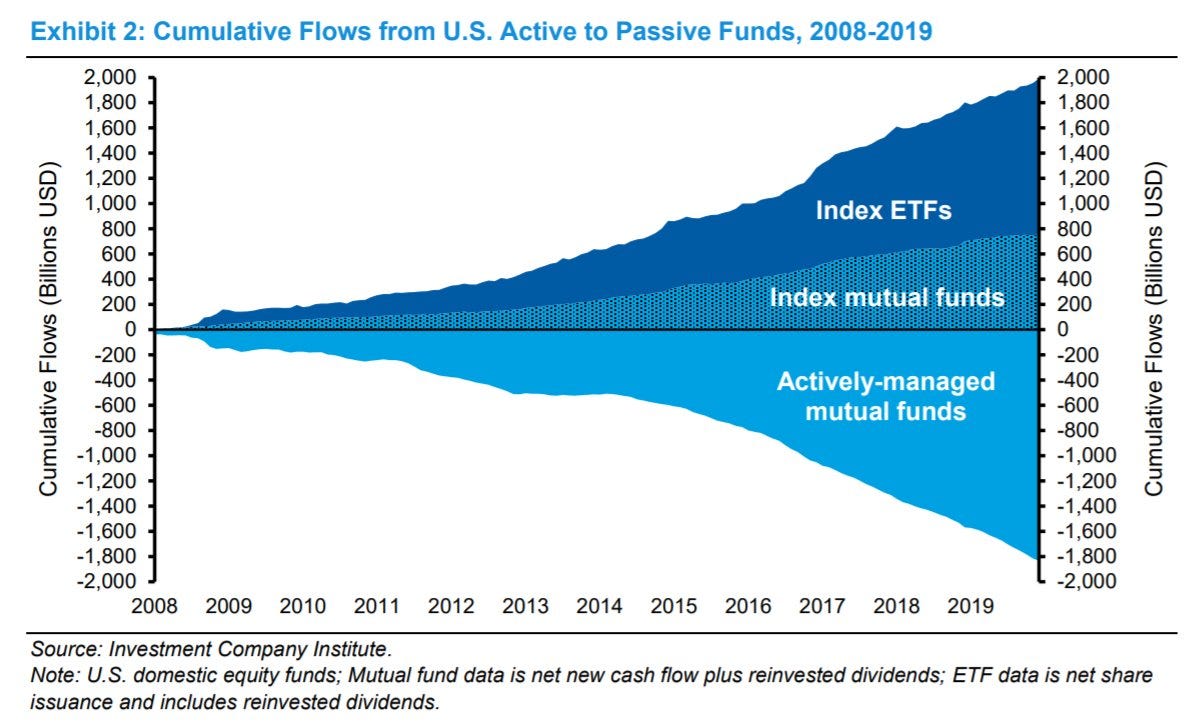
‘Over 11 years, ~$2T shifted from actively managed to index funds’
Chart from ‘Public to Private Equity in the United States: A Long-Term Look’, a paper by Michael Mauboussin and Dan Callahan, via @bizalmanac
Interview: ‘Modest Proposal’
Good interview with the artist known as Modest Proposal on Twitter.
The whole thing is worth listening to, and if you want an idea of what is discussed, you can look at the show notes down the page here. The last section is about IAC and Barry Diller, for the Diller Gang out there.
If you haven’t heard it, Modest’s first interview with Patrick is also worth a listen.
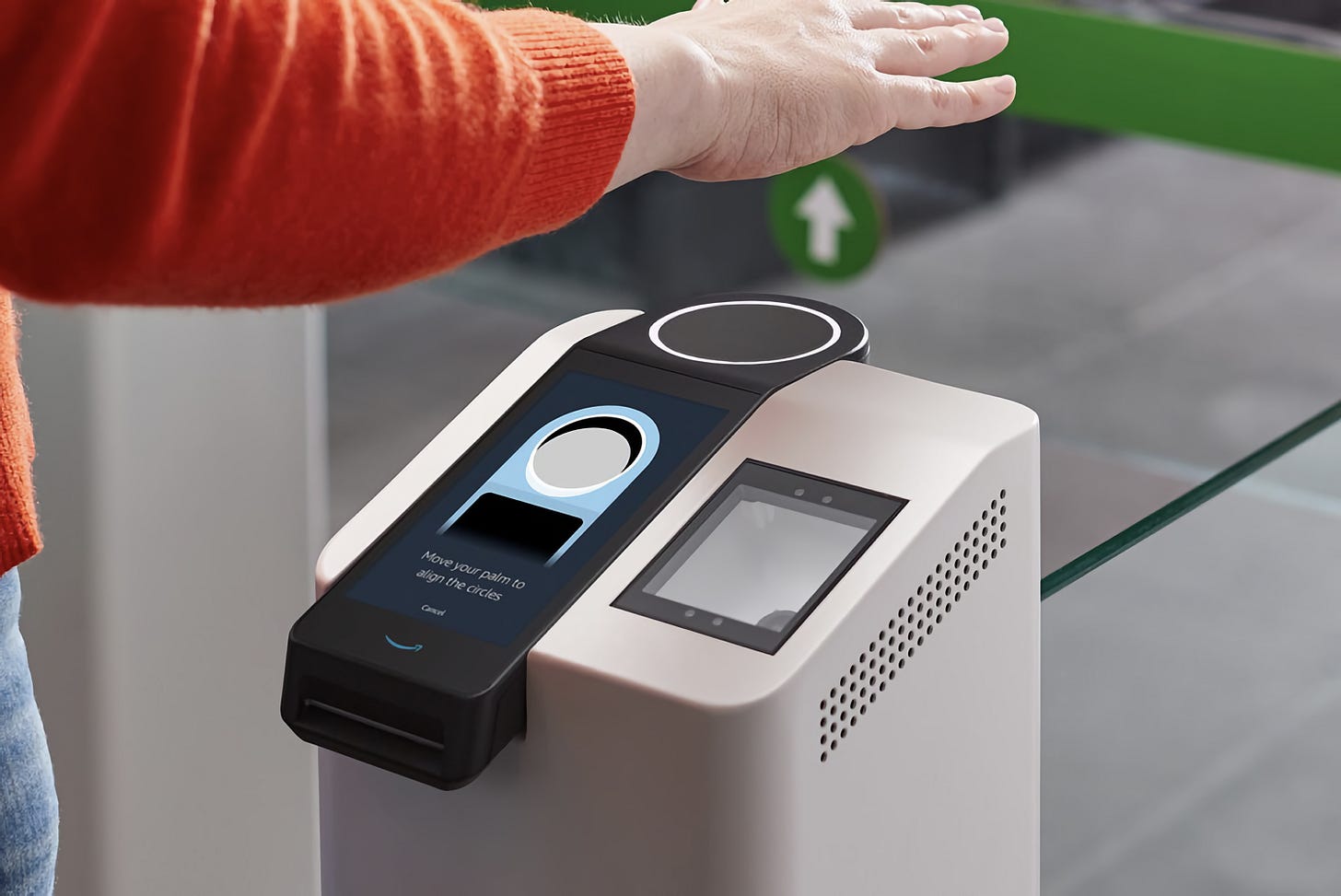
Amazon One: Biometric Tech Allows Paying with Palm of Hand
Amazon One is a fast, convenient, contactless way for people to use their palm to make everyday activities like paying at a store, presenting a loyalty card, entering a location like a stadium, or badging into work more effortless. The service is designed to be highly secure and uses custom-built algorithms and hardware to create a person’s unique palm signature.
The idea is that you would sign up at the same terminals that are used to pay. They claim it takes “less than a minute” and you just need to enter your credit card and then follow the prompts so that they can scan your hand. An Amazon account isn’t required to sign up.
And it’s contactless, which is post COVID19 times is a big deal.
But it’ll be a hard sell to third party retailers, who are direct competitors of Amazon. There’s technical ways to reassure them, like make clear that the only data that Amazon would see is basic payment data (where and how much) and nothing more about what has been purchased, but that still may be too much for most.
We’ll start in select Amazon Go stores, where Amazon One will be added to the store’s entry gate as a convenient choice for customers to use to enter the store to shop. In most retail environments, Amazon One could become an alternate payment or loyalty card option with a device at the checkout counter next to a traditional point of sale system
If this works well (reliably, securely, fast), this is one of these things that will help bring some sci-fi magic into our lives. It could be a big success.
The privacy/security angle is a little more problematic than with, say, Apple’s iPhone biometrics, because these stay encrypted on the phone in a one-way secure enclave that isn’t accessible to the rest of the OS and apps except through a very locked down pathway.
With something like this, Amazon would have to keep the data in the cloud (so that it works in multiple stores), but there’s probably a way to do it to minimize risks (ie. keep only an encrypted hash of the biometric info, from which you can’t recreate the original palm), but Amazon should definitely be very transparent about how they’re doing this.
Source. h/t North Bluff Capital
Interview: Beeneet Kothari of Tekne Capital
Rob from Koyfin doesn’t only work on building one of the best web financial platforms, he also does interviews with investors. I enjoyed this one with Beeneet Kothari:
Beeneet Kothari founded Tekne Capital nine years ago and currently manages $1B investing in Technology stocks globally. Our wide-ranging discussion touches on portfolio construction, Technology sector valuation and individual stock ideas including Agora ($API), Fastly ($FSLY), Taiwan Semi ($TSM) and XP ($XP).
And if you liked that, there’s also a 36-minute interview that Beeneet did on Real Vision. Some context on Beeneet’s career path so far:
Beeneet Kothari, managing partner at Tekne, was fortunate enough to spend a large chunk of his formative years at Stanley Druckenmiller's Duquesne Capital where he became the youngest portfolio manager in the history of the firm.
That interview talks more about what he learned at Duquesne, his philosophy on concentration, the type of businesses he’s looking for and why, tech investing and the impact of the pandemic, etc. Less about individual companies than Rob’s interview.
Court Exchange in Epic v. Apple
Apple has justified its app store policies partly as a way to protect consumers from security risks and malicious software. Epic has countered that it is a credible business that has been on the iOS App Store for years and poses no security threat. But [judge] Gonzalez Rogers said that is not the issue.
"You did something, you lied about it by omission, by not being forthcoming. That's the security issue. That's the security issue!" [judge] Gonzalez Rogers told Epic. "There are a lot of people in the public who consider you guys heroes for what you guys did, but it's still not honest." (Source)
“We’re no threat… except this time when we lied and hid a digital store from app reviewers into a minor software update in breach of contract.” ¯\_(ツ)_/¯
By the way, don’t take this to mean that I’m on one side or the other. I think we should be able to point out a problem with an argument without it meaning that we agree or disagree with everything on one side or the other. In this case, I think both sides make good points, and both sides have done things wrong. Reality is messy…
Science & Technology
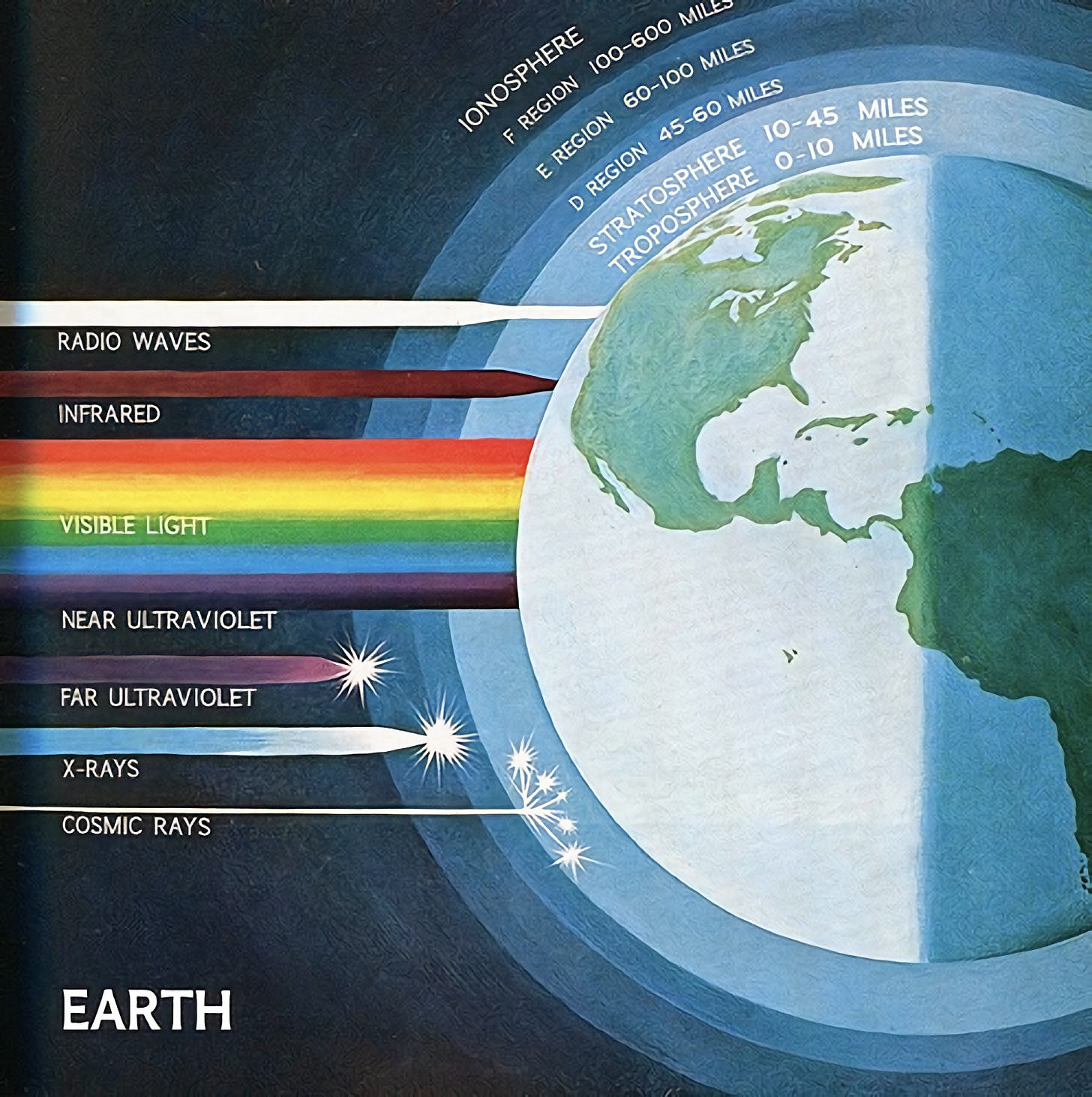
Not sure on the original source, but found it here.
VMware Partners with Nvidia to Optimize its Software for Nvidia Chips
Not sure whether to put this in the business or tech section…
VMware Inc and Nvidia Corp on Tuesday announced an effort to make VMware’s software for managing data centers work better with Nvidia’s artificial intelligence (AI) chips. [...]
Its tools are commonly used by large businesses that operate their own data centers as well as businesses that use cloud computing data centers.
For many years, much of VMware’s work focused on making software work better with processors from Intel Corp, which had a dominant market share of data centers.
In recent years, as businesses have turned to AI for everything from speech recognition to recognizing patterns in financial data, Nvidia’s market share in data centers has been expanding because its chips are used to speed up such work.
VMware’s software tools will work smoothly with Nvidia’s chips to run AI applications without “any kind of specialized setup” (Source)
This reminds me of what Gavin Baker wrote recently in his Medium post about Intel, and the the “exorbitant privilege” of having so much software optimized to perform better on its chips vs the competition. It’ll be interesting to see if more cracks appear in that armor over time.
I’m not saying this deal with VMware is the first. Nvidia has long worked with partners to optimize their software for their platform. But what I’ll be watching for is a change in the balance of power. If more and more software gets optimized for ARM or RISC-V and not just x86, or if Nvidia keeps gaining big partnerships like this, etc.
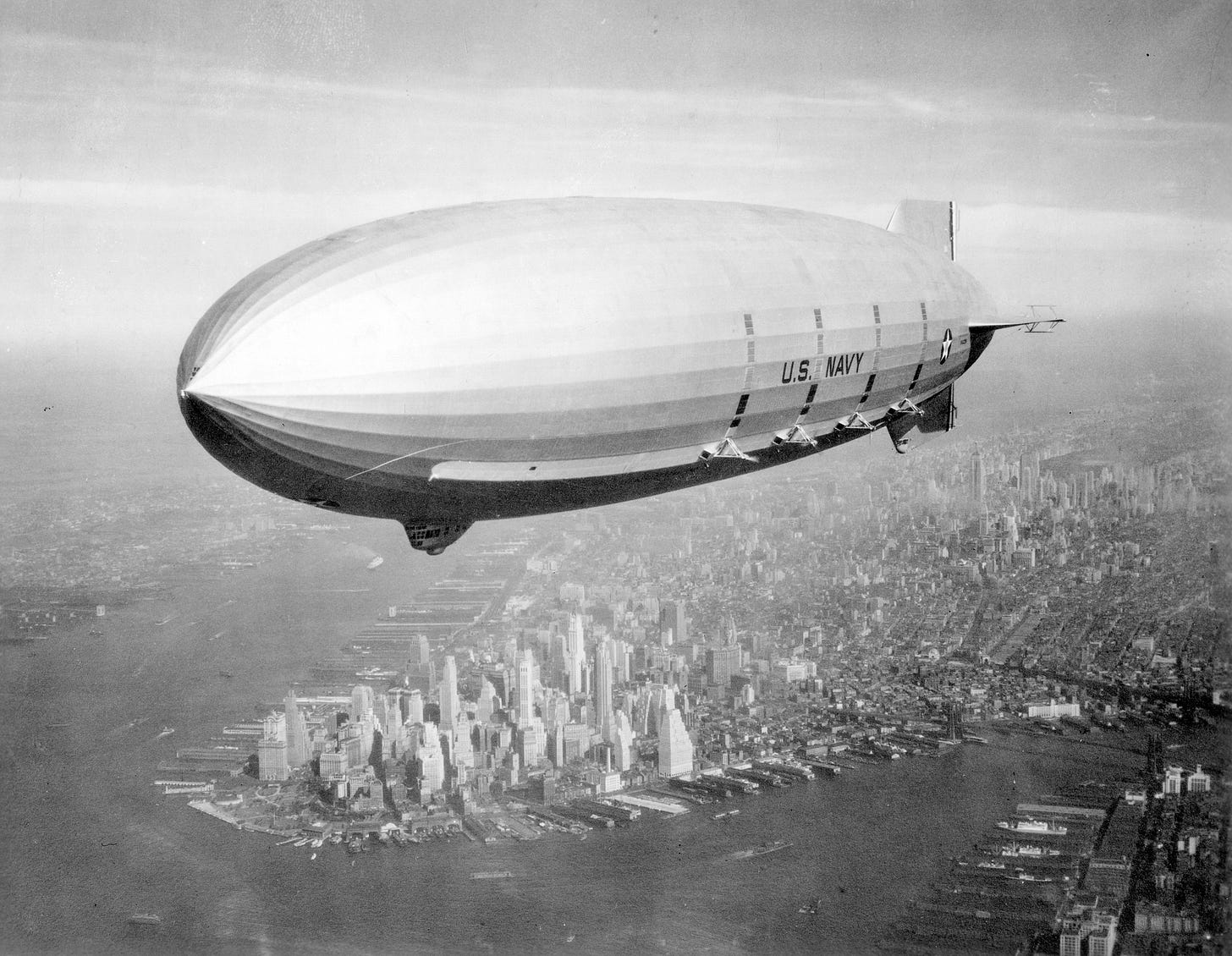
U.S.S. Macon ‘Flying Aircraft Carrier’
The United States Navy airships U.S.S. Akron (ZRS-4) and U.S.S. Macon (ZRS-5) were designed for long-range scouting in support of fleet operations. Often referred to as flying aircraft carriers, each of the helium-inflated airships carried F9C-2 Curtiss Sparrowhawk biplanes which could be launched and recovered in flight, greatly extending the range over which the Akron and Macon could scout the open ocean for enemy vessels.
The airships were 785 ft (239 m) long. The Akron and Macon still hold the world record for helium-filled airships, with a displacement volume of 7,401,260 cu ft (209,580.3 m3).
They had a range of 5,940 nautical miles (11,000 km) at 10 knots (19 km/h; 12 mph).
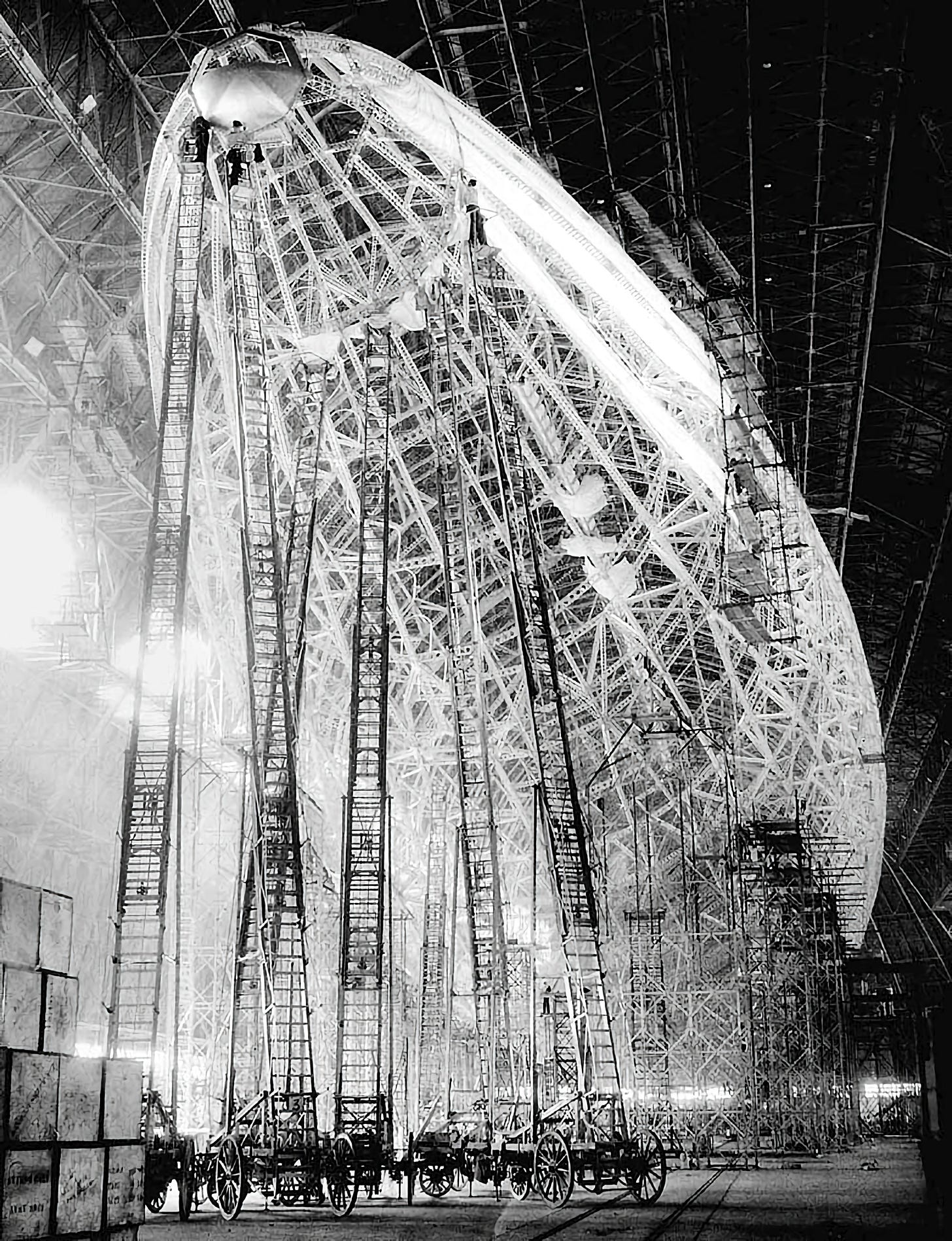
Above is the USS Macon under construction at the Goodyear-Zeppelin Airdock in Akron, Ohio. Construction began in 1931 and it was commissioned in 1933.
The ships were equipped with hangars, approximately 75′ long x 60′ wide x 16′ high, which could stow and service up to five aircraft in flight. Aircraft were launched and retrieved by means of a trapeze, and could enter and exit the hangar though a large T-shaped opening at the bottom of the hull.
You can see what the in-the-air plane docking looked like here. A lot more details here.
Oh, and if you want to see something crazy, check out what Boeing studied as a 747 variant…
NASA Engineers Like Their Holidays Too
This shows how clever humans can be when motivated:
The Voyager [space probe] engineers calculated over 10,000 launch windows so that encounters between the craft and the planets on its trajectory didn't happen during Thanksgiving or Christmas, allowing them to stay home for the holidays. (Source)
Someone who claims to be a retired NASA engineers explains why:
That's because NASA would work us 3 months at a time, no days off, and sometimes 16 hour days do to the fixed budget. (Retired NASA engineer/manager for 21 years).
All the math required to calculate these multi-year transplanetary flights with all the moving parts is amazing. Here’s someone writing about another mission, and the same person as above answering below:
The New Horizons trajectory design was pretty interesting too IMO. They basically doubled the effective launch window by combining two types of transfers, and by leaving arrival time as a dependent variable instead of fixed. The baseline trajectory was the Jupiter flyby one, and then after like 3 weeks of daily opportunities for that option, it would switch to a Pluto-direct transfer. They actually took about the same energy to reach in either case, but the Jupiter flyby options took about 5 years less, so no launch vehicle changes were needed. And even within each option, total transit time would change by months per day of delay (not linearly though). The launch ended up delayed about a week from the opening of the window, but still hit the early end of the Jupiter option. (Source)
The guys out at Pasadena are fucking Wizards. I can't even comprehend some of the math they use to put a spaceship on the edge of the solar system within 8 minutes of when we wanted it there. I can understand and use all low orbit math, but planetary math=fcking voodoo.
The Arts & History
Basement Scene in David Fincher’s Zodiac
Last fall I re-watched ‘Zodiac’ (2007) for the first time since it came out, and liked it a lot. Fincher has made many good movies, and I’d rank this one among his bests.
Having it fresh in mind made this piece by Jake Kring-Schreifels about the basement scene even better. If you haven’t seen Zodiac in a while, now may be a good time for a rewatch before reading this (or if you know you won’t rewatch it in full, maybe refresh your memory with the scene from Youtube — but don’t watch if you’ve never seen the movie, that would spoil a fun scene if you don’t have context).
Almost three decades later, director David Fincher turned Graysmith’s nightmarish visit into one of the creepiest movie scenes of all time. It takes place near the end of Zodiac, after Graysmith (Jake Gyllenhaal) follows Vaughn (Charles Fleischer) to his home through the rain in his conspicuous, bright-orange Volkswagen Rabbit. Once inside, the mood quickly becomes unnerving. After disclosing that he, not Marshall, is responsible for the movie poster handwriting, Vaughn leads a spooked Graysmith down to his dimly lit basement. As the organist sorts through his nitrate film records, the floorboards above Graysmith creak, insinuating another’s presence. After Vaughn assures his guest that he lives alone, Graysmith sprints upstairs to the locked front door, rattling the handle, before Vaughn slowly pulls out his key and opens it from behind. Graysmith bolts into the rain as though he’s just escaped the Zodiac’s clutches. [...]
In one of his early letters, the Zodiac had mentioned having a basement, a small detail that Vanderbilt had inserted into a previous conversation to set up this specific interaction. “We have to hang a light on that earlier so that when we get to this moment, it’s like an ‘Oh, fuck!’ moment,” Vanderbilt says. “You want to deploy that right before he goes down.”
“Not many people have basements in California,” Graysmith notes.
Luring his guest from the table, Vaughn reponds: “I do.”
You can read the whole thing here.
‘Bionic’ Gloves Allow Pianist Who Lost Finger Mobility to Play Again
One of those “science FTW” stories that warms the heart. Check out the video, it’s worth seeing the expression on his face after 20 years of not being able to play (at least not on that level — apparently he kept some practice despite his restricted dexterity and pain).
Here’s a piece with more details (and some photos) on the gloves:
A few days before Christmas, renowned pianist João Carlos Martins summoned his friends to a Sao Paulo bar so he could show off the best gift he'd received in years: a new pair of bionic gloves that are letting the 79-year-old play with both hands for the first time in more than two decades.
Considered one of the great interpreters of Johann Sebastian Bach's music, the Brazilian classical pianist and conductor had retired last March after 24 surgeries trying to stop pains from a degenerative disease and a series of accidents. His limitations had forced him to work mostly as a conductor since the early 2000s.
If you’re expecting super-high tech nerve stimulation, this isn’t quite it. More a clever MacGyver approach:
Ubiratã Bizarro Costa created neoprene-covered bionic gloves that bump Martins' fingers upward after they depress the keys, and which are held together by a carbon fiber board. [...]
Costa and Martins spent the subsequent months testing several prototypes. The perfect match came in December, and cost only about 500 Brazilians reals ($125) to build. Now Martins never takes off his new gloves, even when going to bed.


